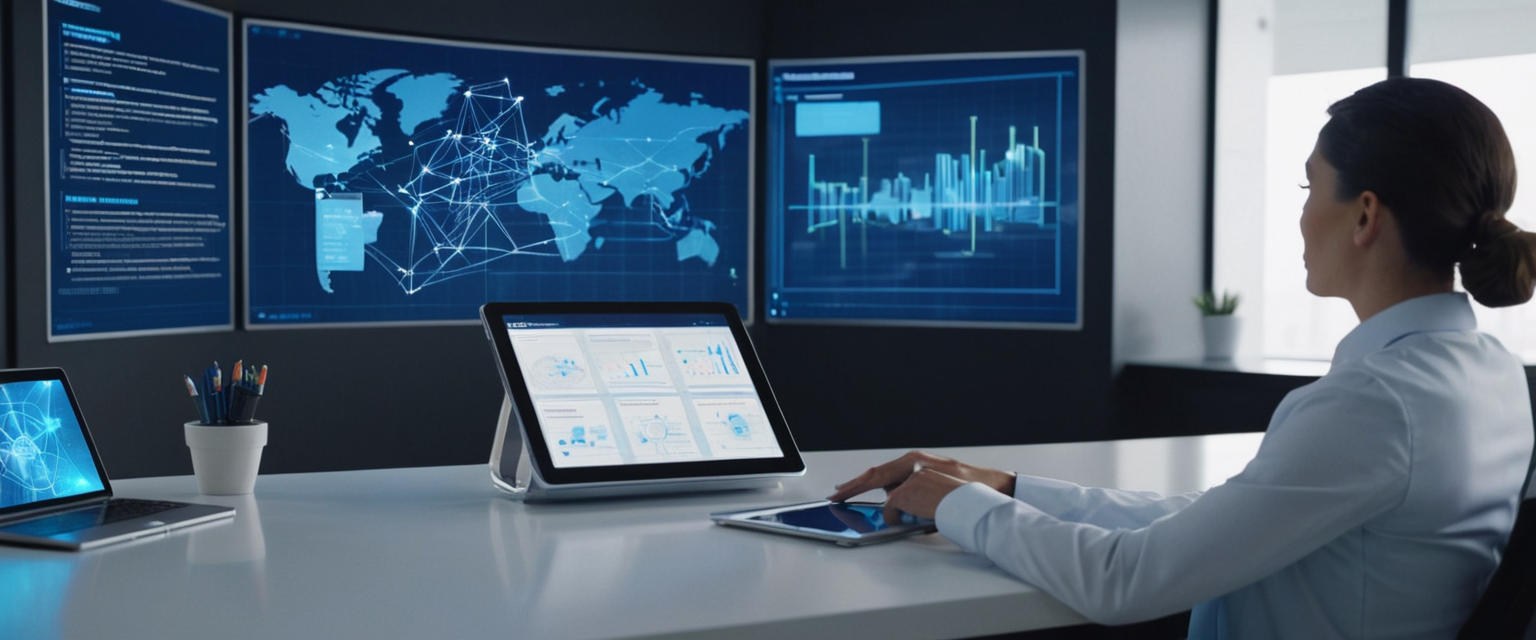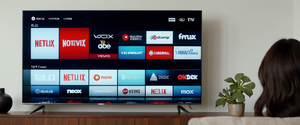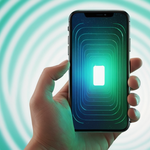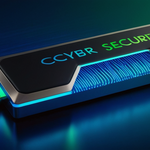
Unplugging USB microphones and cameras represents one of the most straightforward yet often debated strategies in digital privacy protection. The decision to physically disconnect these devices from computers requires careful consideration of security threats, operational needs, practical durability concerns, and evolving cybersecurity best practices. This comprehensive analysis examines the multifaceted dimensions of this critical security decision, revealing that the timing and frequency of disconnection depends heavily on individual risk profiles, device usage patterns, and the specific threat landscape facing users.
The Nature and Prevalence of Webcam and Microphone Threats
Understanding Camfecting and Remote Access Trojans
Webcam hacking, commonly referred to as camfecting, represents a genuine and well-documented cybersecurity threat that has affected thousands of individuals and organizations. Cybercriminals deploy sophisticated malware, particularly Remote Access Trojans (RATs), to gain unauthorized control of cameras and microphones without user knowledge or consent. These attacks have resulted in highly publicized cases, including a 2013 incident where a Miss Teen USA was targeted by an attacker who used hacked webcams to capture intimate images for blackmail purposes. The perpetrator was eventually arrested and sentenced to eighteen months in prison, but the case demonstrated the serious psychological and legal consequences that can result from unauthorized surveillance access.
The mechanisms through which these attacks occur are diverse and increasingly sophisticated. Attackers typically employ Remote Access Trojans that hide within seemingly harmless files or programs, tricking victims into installation through download links on social media, messaging applications, or malicious websites. Once installed, these programs give the attacker full remote access to the device, including the ability to activate cameras and microphones without visual or auditory indicators. This invisibility is particularly concerning because attackers can now disable the LED indicator lights that normally alert users when cameras are active, meaning victims may never realize they are being recorded.
Financial and Psychological Motivations Behind Attacks
The motivations driving these attacks are varied but often financially motivated. Some attackers seek compromising footage to use as blackmail material, while others aim to accumulate data that can be sold for profit on underground markets. In certain cases, hackers record intimate conversations and profit by uploading recordings to pornography websites or threatening to share them online unless victims pay Bitcoin ransoms. This type of extortion causes severe psychological and emotional stress in addition to financial losses. Company webcams may also be hacked for industrial espionage purposes, potentially leading to theft of valuable intellectual property or research and development materials. In high-stakes environments involving journalism, politics, or government operations, state-sponsored hackers may employ camfecting to monitor individuals involved in sensitive activities or negotiations.
Physical Disconnection as a Foundational Security Strategy
The Philosophy Behind Physical Security Measures
Physical disconnection of USB peripherals represents the most reliable method of preventing unauthorized access to webcams and microphones because it eliminates the attack surface entirely. This approach aligns with a security principle that has protected critical infrastructure for decades: if a device is not connected to any network or system, it cannot be remotely compromised. This philosophy has gained renewed prominence as cybersecurity professionals acknowledge that software-based defenses, while important, remain vulnerable to sophisticated exploits and zero-day vulnerabilities that attackers can use to breach even well-protected systems.
The principle of physical disconnection goes beyond mere metaphorical security—it represents an active barrier against multiple attack vectors simultaneously. When a USB device is unplugged, it cannot be compromised by malware installed on the computer because there is no connection through which the malware could access it. It cannot be hijacked through network-based attacks because there is no network pathway available. It cannot be affected by supply chain compromises or firmware manipulations because these typically require an active connection to exploit.
Government and Organizational Adoption of Physical Disconnection
Recognizing the effectiveness of physical disconnection, governments and critical infrastructure operators worldwide have begun implementing policies requiring physical separation of sensitive systems. Singapore instructed civil servants in 2016 to disconnect their work computers from the Internet to avoid hacking attempts and information leaks, implementing what became known as “Internet-surfing separation” to isolate sensitive government systems that cannot reach external networks. The United States Department of Defense and intelligence agencies have long relied on air-gapped systems for classified communications, with networks including SIPRNet for classified military communication operating on strictly controlled, physically segmented infrastructures. The European Union, through directives like NIS2 and the Critical Entities Resilience Directive, requires critical infrastructure operators to implement the highest levels of security, which can include physical disconnection strategies. Australia’s Security Legislation Amendment Act of 2022 similarly encouraged reduction of attack surfaces, including through physical disconnection possibilities.
These policies reflect a growing global consensus that software defenses alone can no longer adequately protect critical systems and sensitive data. The reality is that even the most sophisticated digital security measures can be breached given sufficient attacker resources and time, but physical disconnection provides a fail-safe mechanism that no amount of hacking skill can overcome.
Malware Infection Vectors and How Disconnection Provides Protection
Common Pathways for Device Compromise
To understand when disconnection becomes necessary, it is essential to recognize the common pathways through which USB microphones and cameras become compromised. Malware can be introduced through phishing emails containing file attachments, malicious downloads that appear to be legitimate software updates or applications, compromised websites that trigger automatic downloads, and social engineering tactics that convince users to install malicious programs. Additionally, malware can spread through Bluetooth connections, Wi-Fi networks, and even through USB drop attacks where infected devices are left in public locations hoping someone will connect them to their computer.
Once malware gains a foothold on a system, it can provide attackers with access to device components including the camera, microphone, GPS, and accelerometer, with malware on mobile devices being particularly concerning as it spreads rapidly, especially on Android devices. The problem is exacerbated by the fact that many users do not immediately recognize signs of infection, meaning malware can operate silently for extended periods before being detected.
How Physical Disconnection Blocks Multiple Attack Vectors
By unplugging USB microphones and cameras, users block multiple attack vectors simultaneously. First, they prevent Remote Access Trojans from being able to access or control these devices, as the malware cannot communicate with equipment that is not connected to the computer. Second, they eliminate the possibility of firmware-based attacks like BadUSB attacks that reprogram device firmware to perform malicious actions, because these attacks typically require an active connection to execute. Third, they prevent keystroke injection attacks or other hardware-based exploits that might attempt to manipulate these devices.
Timing of Disconnection: Risk Assessment Framework
When Disconnection is Most Critical
The decision of when to unplug USB microphones and cameras should be based on a careful assessment of individual risk factors and usage patterns. Users who remain logged into video conferencing applications like Zoom or Microsoft Teams, particularly when meetings are not actively occurring, face elevated risk of unauthorized camera or microphone activation. This risk increases substantially when users leave computers running and unattended, as attackers with remote access have extended time windows to compromise these devices without detection. Remote workers who use video conferencing extensively should strongly consider disconnecting cameras and microphones when not actively participating in meetings or when stepping away from their workstations.
Individuals working from home in sensitive fields—including legal, financial, healthcare, or government sectors where confidential conversations occur—face higher risks that justify regular disconnection of recording devices. Government employees and contractors working with classified information should consider unplugging USB microphones and cameras as a matter of policy when not actively using them for legitimate purposes. Similarly, individuals who have reason to believe they may be targeted by sophisticated attackers—whether due to their professional position, activism, or other factors—should prioritize physical disconnection as part of their security strategy.
Lower-Risk Scenarios Where Continuous Connection May Be Acceptable
Not all users require the same level of protection. Individual users engaged in typical personal computing tasks, with no particularly sensitive content in their communications, face considerably lower risk from camera and microphone hacking than professional or governmental users. These individuals may find continuous connection acceptable if they have implemented robust software protections including current firewalls, antivirus software, and operating system updates.
Users who have covered their camera lenses with opaque tape or physical covers have already implemented a basic but effective defense against visual surveillance, though covering does not protect against audio surveillance through microphones. Those who regularly use external cameras and microphones can easily switch them off when not in use without the inconvenience that would result from continuously plugging and unplugging built-in devices. Professional settings with centralized IT support and device management may have implemented comprehensive controls that make continuous disconnection less necessary, though even in these environments, disconnection remains advisable for sensitive work.

Software-Based Defenses and Their Limitations
Comprehensive Software Protection Strategies
While physical disconnection provides absolute protection, software-based defenses play a crucial complementary role in a comprehensive security strategy. Users who choose to leave USB microphones and cameras connected should implement multiple layers of software protection. Maintaining current operating systems with the latest security patches is fundamental, as developers continuously release updates that close security vulnerabilities exploited by attackers. Regularly updating drivers for webcams and microphones ensures that device-specific security improvements are applied, though many users neglect this step thinking only operating system updates matter.
Deploying robust firewalls configured to monitor outgoing connections provides another critical layer of defense, as this can detect when malware attempts to transmit video or audio data to external servers. Installing enterprise-grade antivirus and antimalware software provides real-time protection against known threats, though it cannot protect against zero-day exploits or sophisticated threats specifically designed to evade detection systems. Endpoint detection and response (EDR) systems offer advanced protection by monitoring device behavior and identifying suspicious patterns that antivirus software alone might miss.
The Fundamental Limitation of Software Defenses
Despite the effectiveness of these software measures, they share a critical limitation: they remain vulnerable to sufficiently sophisticated attacks. Software-based defenses operate within the same infected operating system they are meant to protect, creating an inherent conflict of interest where malware sophisticated enough to gain kernel-level access can potentially disable or circumvent security software. Zero-day vulnerabilities—previously unknown security flaws that attackers exploit before developers can create patches—remain completely unprotected by any software defense until they are discovered and patched. Furthermore, sophisticated government-level malware specifically designed to evade particular security products can potentially bypass even advanced software protections.
This is why organizations handling extremely sensitive information increasingly recognize that software defenses, while necessary, are insufficient as sole protective measures. Physical disconnection provides protection that no amount of software sophistication can overcome—an attacker cannot remotely access a device that is not connected to any network or system. This realization has driven the adoption of physical disconnection policies in government agencies, military operations, and critical infrastructure facilities worldwide.
Hardware-Level Vulnerabilities and Disconnection’s Role
BadUSB and Firmware-Based Threats
A particular class of threats highlights why physical disconnection matters even when devices appear secure. BadUSB attacks involve reprogramming USB device firmware to transform ordinary peripherals into sophisticated attack tools that can emulate keyboards, network adapters, or other devices, executing unauthorized actions without detection by traditional security software. These firmware-based attacks are particularly insidious because they operate at a level below what most antivirus and antimalware software can monitor or defend against.
When a BadUSB-compromised microphone or camera remains connected to a computer, the firmware can remain active and potentially execute malicious commands. Physical disconnection prevents this by severing the connection through which the compromised firmware would communicate with the computer system. Similarly, keystroke injection attacks using USB devices disguised as keyboards represent another threat where firmware reprogramming allows the device to input commands into the computer, potentially downloading additional malware or extracting sensitive files. These attacks can succeed even when security software is running because the device itself is masquerading as legitimate hardware.
USB Congestion Side-Channel Attacks
Recent academic research has identified even more sophisticated attack vectors. USB congestion-based side-channel attacks exploit the shared bandwidth characteristics of USB hubs to infer information about what other connected devices are doing, potentially allowing attackers to determine which websites users are visiting or what applications are running. These attacks work by observing patterns in USB traffic congestion without requiring direct malware infection or device compromise. While this particular vulnerability requires technical sophistication and physical proximity to USB hubs, it demonstrates that USB connections can leak sensitive information even without direct device compromise.
Physical disconnection eliminates this vulnerability entirely, as there is no USB connection to monitor for congestion patterns. This represents another dimension where disconnection provides benefits beyond preventing direct malware infection.
Device Durability and Hardware Wear Considerations
The Mechanical and Electrical Stress of Continuous Connection
An often-overlooked factor in the disconnection decision involves the physical durability and lifespan of USB devices themselves. USB connectors and cables experience mechanical wear each time they are repeatedly plugged and unplugged, and this wear can eventually result in loose connections, intermittent failures, or complete loss of functionality. However, this mechanical wear must be balanced against the wear that occurs from continuous electrical stress when devices remain perpetually connected.
Continuous power flow, even when computers are in sleep mode or hibernation, subjects USB components to low-level electrical stress that can potentially shorten device lifespan over years of operation. Power supply units, capacitors, and other electronic components can gradually degrade from this sustained stress, potentially leading to premature failure. Additionally, leaving devices continuously powered can generate heat that attracts dust and debris, which accumulates inside devices and stresses cooling systems while reducing the overall lifespan of delicate components.
Practical Considerations for Different Usage Patterns
For devices used frequently throughout the day, disconnection every few minutes would cause impractical wear on both the USB connector and the cables. In these cases, leaving devices connected while implementing robust software protections represents a reasonable compromise. However, for devices used sporadically—such as external USB cameras and microphones kept for occasional video conferencing—physical disconnection when not in active use can actually extend device lifespan by protecting them from continuous electrical stress while the computer operates for other purposes.
Modern USB-C connectors present particular longevity challenges, with many users reporting connector failures within approximately one year of regular use due to mechanical stress from repeated connections and the small size of the connector relative to the forces it must withstand. This reality suggests that for USB-C connected microphones and cameras, the mechanical wear from frequent disconnection might be a genuine concern that users should consider alongside security benefits.
Practical Disconnection Strategies and Implementation
Optimal Timing Based on Usage Patterns
Developing a practical disconnection strategy requires matching the security requirements of individual users with realistic daily routines. For video conferencing professionals who spend significant portions of their workday in meetings, implementing a policy of disconnection during lunch breaks, at the end of the workday, and throughout evenings and weekends provides substantial security benefit without impractical interference with work. This approach acknowledges that disconnection is least valuable during intensive use periods when the devices are functioning as intended, but provides critical protection during the extended periods when they would otherwise remain connected but unused.
Remote workers handling sensitive information who work from home should consider disconnecting webcams and microphones whenever leaving their workstation, whether for bathroom breaks, meal preparation, or other activities, as these are precisely the times when an attacker with remote access could attempt surveillance without the user’s awareness. This practice requires minimal disruption while providing meaningful security during vulnerable periods.
For individuals with lower security requirements, a weekly ritual of disconnection—perhaps Sunday evening or Friday evening—provides reasonable security benefits without daily inconvenience. This approach demonstrates commitment to security consciousness while acknowledging that constant disconnection may be impractical for casual users.
Using KVM Switches and Alternative Approaches
KVM switches, which are devices that allow switching USB device connections between multiple computers or disconnecting them entirely from active use, provide a middle ground between continuous connection and frequent unplugging. A user can toggle a KVM switch to isolate peripherals when not in use without physically unplugging cables, potentially reducing mechanical stress on connectors while still providing physical disconnection security benefits. Professional-grade KVM switches designed for use by law enforcement and government agencies exist alongside consumer USB KVM switches for more general purposes.
For organizations managing many devices, implementing USB port blockers that physically prevent unauthorized device connections can reduce reliance on frequent disconnection while preventing casual connection of unknown devices. These blockers can only be removed with special keys, providing physical security against unauthorized device use while allowing authorized users to quickly enable devices when needed.

Real-World Incidents and Lessons from Target Users
High-Profile Cases Influencing Public Awareness
The campaign for webcam disconnection gained particular momentum when high-profile figures began openly acknowledging the practice. FBI Director James Comey stated that he covers his personal laptop’s webcam with tape and explained that this practice is common throughout government offices, with all federal workers having little lids that close down on their camera devices so that people without authority cannot look through them, describing this as a sensible practice that everyone should adopt. Similarly, Facebook CEO Mark Zuckerberg was photographed with tape covering his laptop’s webcam, demonstrating that even technology leaders who might be expected to rely on sophisticated software protections consider physical camera covering important.
These public endorsements from security experts and technology leaders helped normalize the practice of physically disabling cameras and microphones, though the actual effectiveness of camera covers in protecting against surveillance has evolved with technology. While camera covers prevent visual surveillance, they obviously cannot protect against audio surveillance through connected microphones, and sophisticated malware could potentially disable indicators that would alert users to microphone activation.
The NSA’s Optic Nerve Program and Government Surveillance
Legitimate concerns about surveillance extend beyond criminal hackers to include government surveillance programs. Edward Snowden’s leaks revealed the NSA’s Optic Nerve operation that captured webcam images every five minutes from random Yahoo users, with approximately 1.8 million images stored on government servers from just six months of the program in 2008. This operation demonstrated that even sophisticated technology companies could have their infrastructure compromised by state-sponsored surveillance programs, and that the threat to webcam privacy extended beyond criminal actors to include governmental entities.
This revelation provided additional justification for webcam disconnection and covering among privacy-conscious users who wished to protect themselves not just from criminal threats but from potential government surveillance. While not all government activities rise to the level of the Optic Nerve program, the documented existence of such programs demonstrates that the threats to camera and microphone privacy are not merely theoretical but have been operationalized by well-resourced actors.
Specific Scenarios Where Disconnection is Strongly Recommended
Professional and Sensitive Work Environments
Legal professionals handling client information, healthcare providers managing patient data, financial services employees accessing customer accounts, and government workers with security clearances should maintain practices of disconnecting recording devices when not actively using them for legitimate professional purposes. These professionals face elevated risks because their recordings could expose confidential client-attorney communications, medical information, financial details, or classified government information if captured by unauthorized parties.
Similarly, journalists, activists, and others engaged in work that might draw the attention of hostile state or non-state actors should prioritize disconnection as part of their security practice. The 2013 Miss Teen USA case demonstrated that even individuals not engaged in particularly sensitive professional work can become targets if attackers develop an interest in them, so elevated vigilance is warranted for those whose work specifically draws adversarial attention.
During Sensitive Conversations and Activities
Beyond professional categories, certain moments and activities warrant disconnection regardless of the user’s general risk profile. Intimate moments with family members, medical consultations, financial discussions, or conversations involving sensitive personal information should occur only when recording devices are either physically disconnected or visibly covered and the user is confident that microphone recording is not occurring. An unexpectedly active microphone during these moments could expose information that users would never willingly share.
Similarly, individuals managing personal disputes, handling medical information, or engaging in other private activities should consider disconnecting microphones and cameras. The technical possibility of sophisticated hackers remotely activating these devices might be remote for average users, but the potential consequences are severe enough to justify occasional disconnection as a precaution.
Unattended Computer Operation
Users leaving computers running and unattended for extended periods face elevated risk, as attackers with remote access to the system would have unlimited time to manipulate webcams and microphones without the user’s awareness or ability to detect suspicious activity in real time. Disconnecting devices before leaving the desk or room provides protection during these vulnerable periods. This is particularly important in office environments where multiple employees share workspace or where cleaning staff might access workstations during evening hours.
Addressing Common Objections and Practical Concerns
The Inconvenience Argument
Users often object to disconnection practices based on inconvenience, particularly for frequently-used devices. However, this objection must be weighed against the genuine security risks and the increasing sophistication of attacks. Modern USB connections have been designed to make connections and disconnections relatively quick and painless, and wireless alternatives have improved to the point where many users might consider transitioning to wireless microphones and cameras that can be physically powered off rather than disconnected from USB ports.
Furthermore, the inconvenience of disconnection must be compared to the potential consequences of successful compromise. Individuals who have fallen victim to camfecting and subsequent blackmail report that even the relatively minor inconvenience of regular disconnection would have been a worthwhile investment to prevent their ordeal.
The “Nothing to Hide” Fallacy
Some users argue that they have nothing to hide and therefore need not be concerned about surveillance through webcams and microphones. This argument fails to account for several important realities. First, surveillance victims may not be engaging in anything illegal or even inappropriate from their perspective, but attackers may have different standards or motivations. Intimate moments that people would consider appropriately private are routinely recorded without consent and exploited for extortion.
Second, the existence of surveillance capability changes behavior even when individuals believe they have nothing to hide. Research demonstrates that people modify their speech, activity levels, and overall behavior when they believe they might be watched, a phenomenon known as the chilling effect. Even if surveillance never actually occurs, merely believing that recording devices might be active at any moment can restrict the freedom and privacy that people deserve in their own homes.
Third, the decision to accept surveillance risk is not merely individual; it affects family members, guests, and others who may enter spaces where connected recording devices operate. Individuals who share homes with spouses, children, elderly parents, or guests are potentially exposing those individuals to surveillance risk without their knowledge or consent.
Integrating Disconnection into Comprehensive Security Strategies
Layered Defense Architecture
Effective security requires multiple overlapping layers of protection, where physical disconnection serves as the final, most reliable layer of defense that prevents compromise regardless of vulnerabilities in other layers. This layered approach integrates physical security (covering cameras, disconnecting devices), software security (firewalls, antivirus, operating system updates), behavioral security (avoiding suspicious links and downloads), and access control (strong passwords, multi-factor authentication).
When implemented together, these layers create a comprehensive defense where the failure of any single layer does not result in successful compromise. Physical disconnection of USB microphones and cameras provides particular value in this architecture because it represents a layer that cannot be penetrated by software exploits or social engineering.

Developing Individual Security Policies
Different individuals and organizations should develop written security policies that address when disconnection is required, recommended, and optional based on their specific risk profiles. These policies should consider the sensitivity of information typically discussed near recording devices, the likelihood of targeted attack, the frequency of legitimate use, and practical constraints on implementation.
Organizations should train employees on their camera and microphone policies and create a culture where disconnection practices are normalized rather than viewed as paranoid or unusual. Individuals should develop personal policies that balance security needs with practical convenience, recognizing that a security practice that is too burdensome will be abandoned, while a practice that requires minimal sacrifice can be maintained indefinitely.
Your Smart Unplugging Strategy
The decision of when to unplug USB microphones and cameras ultimately depends on individual risk assessment, usage patterns, and personal values regarding privacy and security. For individuals in sensitive professions, those handling confidential information, or those with reason to believe they might be targeted by sophisticated attackers, regular disconnection provides genuine security value that justifies the minor inconvenience involved. For these users, disconnection should be standard practice rather than exceptional precaution.
For casual users engaged in typical computing activities without particular security concerns, continuous connection with robust software protections may represent a reasonable balance between security and convenience. However, even casual users should consider disconnecting during particularly sensitive activities or conversations, at minimum disconnecting overnight and during extended periods away from their workstations.
The most important principle is that individuals take deliberate action rather than passively accepting whatever connection state their devices happen to be in. Whether through regular disconnection, use of physical covers on cameras, disabling of microphone access in application settings, or implementation of comprehensive software protections, users should consciously make decisions about the security of their recording devices rather than overlooking them.
As camfecting and remote access trojans continue to pose genuine threats, and as academic research continues to identify new vulnerabilities in USB connections and connected devices, physical disconnection remains the most reliable defense available. The practice requires minimal financial investment—truly just the act of unplugging cables—yet provides benefits that no amount of expensive security software can completely replicate. In an era where sophisticated adversaries continue to develop new attack methods, maintaining the simple practice of physically disconnecting recording devices when they are not in active use represents one of the most effective security measures available to individual users protecting their privacy and that of their families.
Protect Your Digital Life with Activate Security
Get 14 powerful security tools in one comprehensive suite. VPN, antivirus, password manager, dark web monitoring, and more.
Get Protected Now





